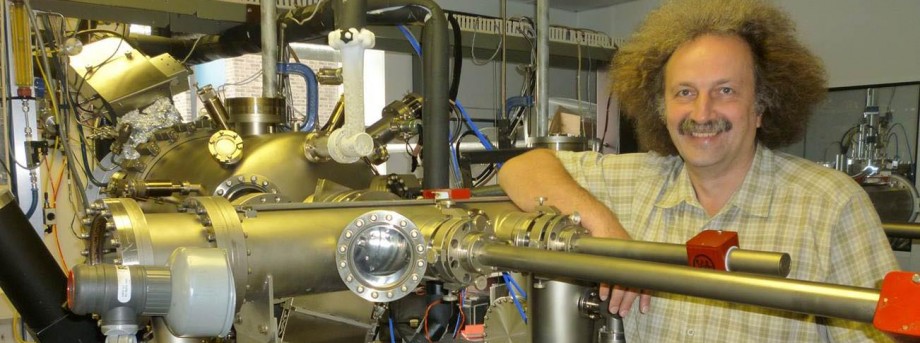The University of Nottingham
 Exchange online
Exchange online
Research Exchange
£1.3m EPSRC grant enables large scale graphene production at Nottingham

£1.3m of funding from the Engineering and Physical Sciences Research Council (EPSRC) will be used to buy a new molecular beam epitaxy (MBE) system for The University of Nottingham.
The system will enable the growth of high quality, large area layers of graphene and boron nitride for electronic and optoelectronic applications — such as diodes and transistors — on a much larger scale than was previously possible. This is because the new system is able to reach much higher temperatures than existing systems currently at the University.
Dr Sergei Novikov, principal research fellow in the Faculty of Science, is part of the team which successfully applied for the EPSRC funding. He said: “This is a step towards real options to produce graphene and boron nitride layers in a controlled way that could be used in production and engineering. We anticipate that graphene-based heterostructures grown by MBE will have a long-term impact by unlocking the full potential of graphene in electronics and optoelectronics.”
Nobel Prize for physics
The discovery of graphene and its electronic properties by Geim, Novoselov and colleagues at the University of Manchester in 2004 has provided scientists and engineers with a material system for revolutionising electronics and optoelectronics. This work resulted in the Nobel Prize in Physics for the Manchester group in 2010.
Dr Novikov said: “The Manchester group, in collaboration with one of the Nottingham team, Laurence Eaves, recently realised a new type of graphene transistor architecture, namely a field-effect transistor based on quantum tunnelling between a graphene electrode through a thin boron nitride barrier. Now we know it’s possible to make useful devices, it needs to be scaled up — and we believe that MBE is the tool to do it.”
Dr Novikov believes the impact of MBE systems will grow in the future and this acquisition will ensure that he and his colleagues are at the forefront of developments in graphene science and technology.
Molecular beam epitaxy
He said: “There are two well-established methods to grow epitaxial material, namely chemical vapour deposition (CVD) and molecular beam epitaxy (MBE). CVD is currently used world-wide to prepare graphene films. However, MBE has potential advantages for thin film growth with abrupt interfaces and monolayer control of thickness, composition and doping.
“Growth of graphene-based heterostructures will open up many new possibilities. Up to now MBE has not been extensively studied for the growth of graphene, because existing commercial systems are not suitable for the temperature range needed for epitaxial graphene films. We will develop a custom-designed system for the growth of graphene/boron nitride heterostructures, which will be unique.”
This new technology will be housed in the University’s School of Physics and Astronomy.
Training for two PhD students
The University is contributing an additional £240,000 to fund installation of the new MBE system, the running costs and consumables, and PhD studentships relating to the MBE system and graphene research.
Dr Novikov said: “The project will provide training for two PhD students, thus providing the first cohort of researchers who can support expansion of graphene research in the UK both in academia and industry. We will also share information on the growth and technology of graphene/boron nitride by MBE with interested groups in UK universities and industry, which will further enhance the UK capability in emerging graphene technologies.”
Tags: graphene, Physics, Sergei Novikov
Leave a Reply
Other

Top prize for quantum physicist
A University of Nottingham physicist has won a prestigious medal from the Institute of Physics for […]

Zero carbon HOUSE designed and built by students comes home
Design and construct a low cost, zero carbon, family starter home, transport it to Spain, build […]